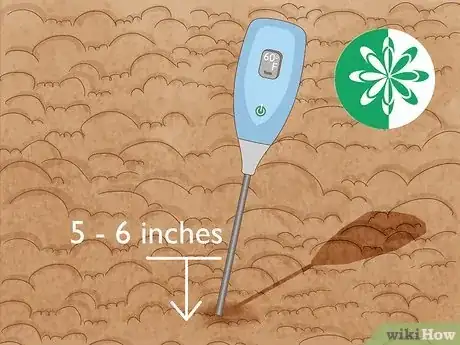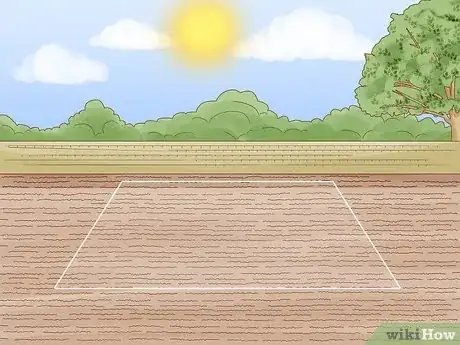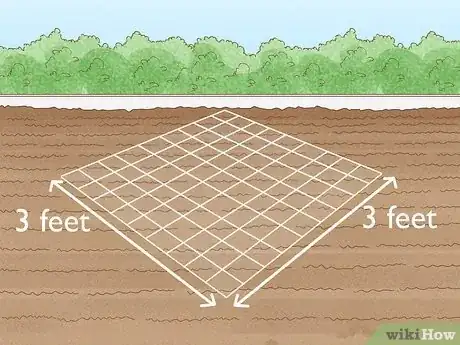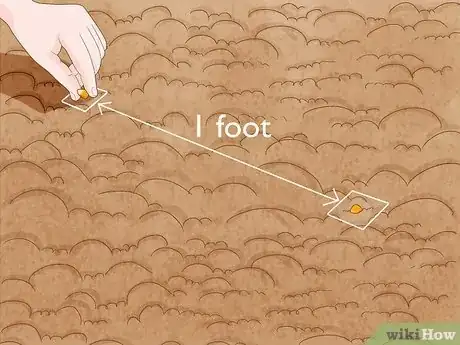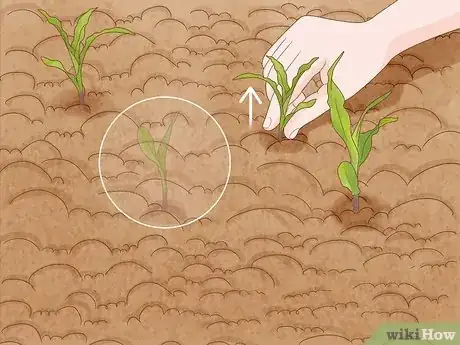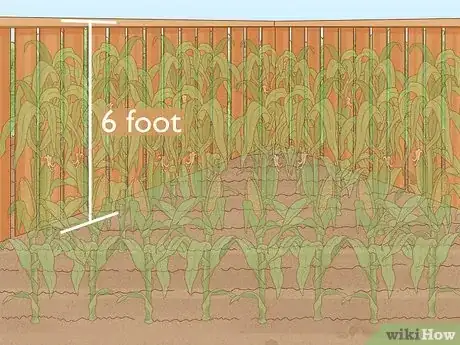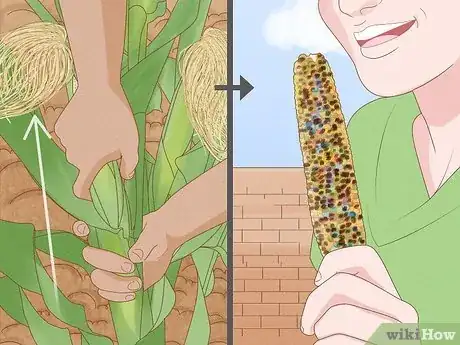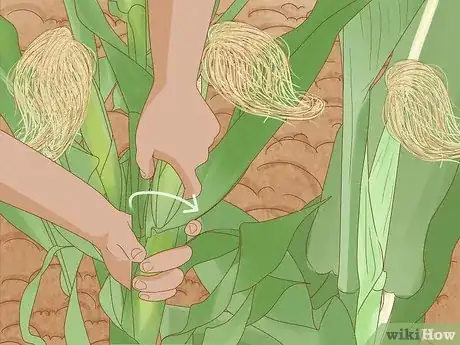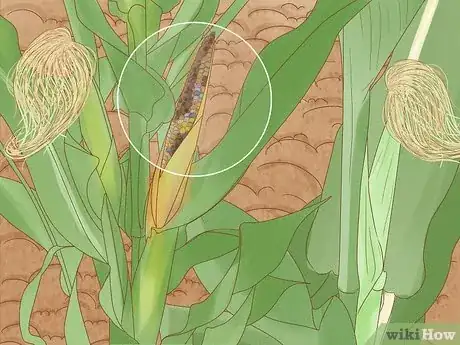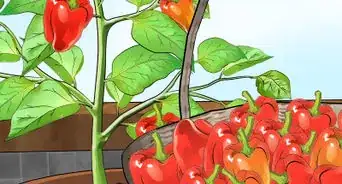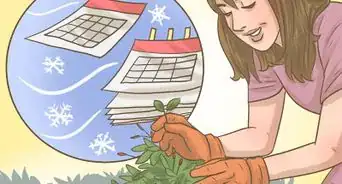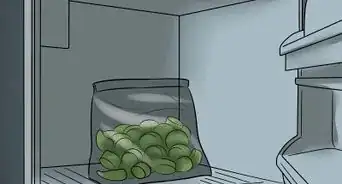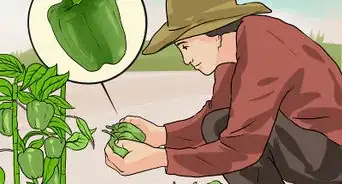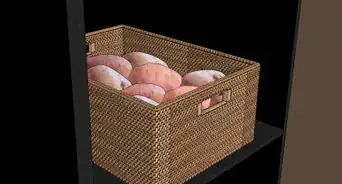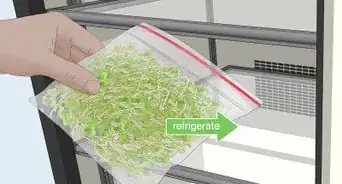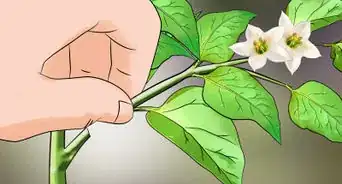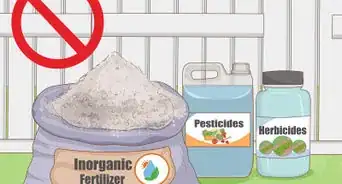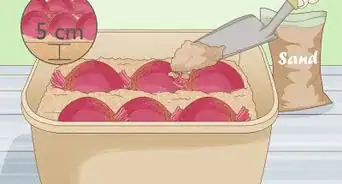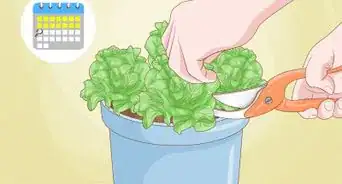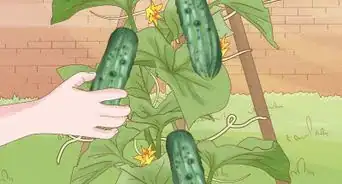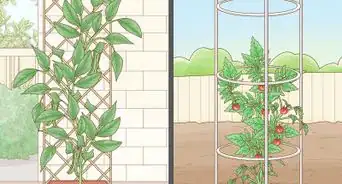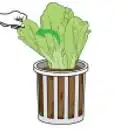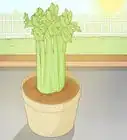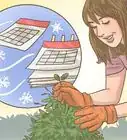This article was co-authored by wikiHow Staff. Our trained team of editors and researchers validate articles for accuracy and comprehensiveness. wikiHow's Content Management Team carefully monitors the work from our editorial staff to ensure that each article is backed by trusted research and meets our high quality standards.
This article has been viewed 25,169 times.
Learn more...
Glass gem corn is a beautiful corn often used in decoration. It is also edible. If you want to grow and harvest glass gem corn, buy seeds online or at a greenhouse. Plant them when the soil is warm. Water your plants regularly and protect them from hazards like wind. Wait until you're ready to use your corn to harvest it, and make sure to remove any damaged pieces of corn.
Steps
Planting Glass Gem Corn
-
1Plant the corn in the spring. You want to wait until you're into the spring season to plant your corn. Corn is very susceptible to frost. The soil should be at least 60 degrees Fahrenheit (16 degrees Celsius) before you plant your corn.
- To measure the temperature of the soil, buy a soil thermometer at a local greenhouse or online. Make a hole 5 to 6 inches (12.7 to 15.2 cm) deep in the soil using a screwdriver and then insert your thermometer. Refer to package instructions to figure out how long to leave your thermometer in the ground.[1]
- Different thermometers may have special instructions or recommendations, so always read the package before using a soil thermometer.
-
2Choose a sunny location to plant the corn. Corn thrives in a sunnier area that's somewhat protected from the wind. An area like a valley that collects a lot of sun can be a good place to plant corn.
- Corn needs protection from the wind to thrive. If you have an area that's surrounded by taller trees, plant your corn here. Trees can serve as a natural windbreaker, protecting your corn from wind as it grows.[2]
Advertisement -
3Plant your seeds in 3 by 3 inch blocks. Gem corn should not be planted in rows. It does better in blocks about three by three feet (approximately one by one meters). Make sure the space you choose is big enough for your corn.
- When placing the seeds in the soil, make sure you plant them one inch deep into the ground.
-
4Space the seeds about one foot apart. Do not plant corn seeds too close together. Corn needs space to grow. Seeds should be planted about a foot apart. Any closer will affect corns ability to grow, and can affect pollination.
Growing Glass Gem Corn
-
1Thin the plants as the corn grows. Not all your seedlings will be able to grow into cornstalks. Corn should start growing in 7 to 10 days. Even if you planted the seeds a foot apart, some corn may grow too close together. In general, you want one stalk of corn per foot. You will have to remove seedlings that are growing too close together.
- You do not have to uproot corn seedlings. You can cut off unwanted seedings at soil level.
- It does not matter which seedlings you cut. However, if one seedling is growing bigger and faster than another, it may make sense to cut the shorter seedling.
-
2Protect your corn from wind. Wind is a major problem for corn and can affect growth. In order to encourage gem corn to grow, take measures to keep your plants safe from the wind. You should invest in windbreaks, which are six foot tall fences designed to protect stalks from the wind. If your corn is not already in a fence or near trees, have windbreaks put up.[3]
- Windbreaks should allow some airflow, as this will diffuse wind without causing harm to the structures. Leave small spaces between different pieces of fence.
- You can also install a fence that is partially opened, like a lattice fence.
-
3Provide an inch of water per week. Corn does not actually need a lot of water. Do not give your corn more than an inch of water each week. You should sprinkle water about an inch deep into the ground when you notice the soil is getting dry.
- Water should be applied at the surface using a soaker hose. You should never water plants from above as this could strip flowering stalks of pollen.[4]
-
4Use a fish-based fertilizer when cornstalks are a foot tall. You can get this kind of fertilizer at a local greenhouse. Opt for a fish-based fertilizer, which you can get at a local greenhouse. Pay attention to the balance of nitrogen, phosphorous, and potassium, which should be somewhere on the label of a fertilizer. They are written in a series of numbers.[5]
- For example, a fertilizer with equal parts nitrogen, phosphorous, and potassium would have a 10-10-10 balance. Corn requires a lot of nitrogen, so go for a fertilizer where the first number is equal to or greater than the second and third.
- Apply fertilizer by sprinkling it evenly over the patch of soil surrounding the corn.
- You should use four to five pounds of fertilizer per 100 square feet of corn.
Harvesting Glass Gem Corn
-
1Look for a milky liquid when you pierce a kernel. Before harvesting your corn, make sure the ears of corn are ready to remove from the stalks. Three weeks after the corn appears silky, peel back some of the corn husk. With your finger, gently prick a kernel of corn. Watch for a milky liquid to leak out. Corn that emits such a liquid is ready to harvest.
-
2Harvest the corn right before you plan to use it. If possible, only harvest corn shortly before using it. This way, corn will be at its sweetest and freshest when you eat it. However, if you prefer less sweet corn, you can wait about two days after the corn ripens to harvest it.[6]
- If you're using gem corn for decorative purposes, however, you can pick it as soon as it's ripe.
-
3Twist corn off its stalks. To remove corn from the stalks, grab onto an ear of corn. Twist the corn while moving your hand downward. It should come off of the stalk. Examine the ear of corn for any bugs before bringing it into your home.[7]
-
4Inspect the corn for damage. Not all of your ears of corn will be safe to eat or use as decoration. After harvesting the ripe ears, examine each of them. Peel back the husks. Duller corn, or corn that is bruised or rotting, should be discarded. Some ears may also be very small and stubby. Smaller ears may not be worth cooking or using as decoration as they have so few kernels.
Community Q&A
-
QuestionCan I preserve colored corn to keep for decoration longer than one season?
 Community AnswerGem corn is a type of flint corn, meaning that it will keep for long periods of time. As long as it's properly dried and not in a moist environment, it will keep for quite a while. You can also chemically preserve it, but it might be more cost effective to just grow more.
Community AnswerGem corn is a type of flint corn, meaning that it will keep for long periods of time. As long as it's properly dried and not in a moist environment, it will keep for quite a while. You can also chemically preserve it, but it might be more cost effective to just grow more.
References
- ↑ https://www.todayshomeowner.com/how-to-measure-soil-temperature-for-planting/
- ↑ http://www.agroconection.com/protecting-plants-from-wind.html
- ↑ http://www.agroconection.com/protecting-plants-from-wind.html
- ↑ http://www.rodalesorganiclife.com/garden/corn-growing-guide
- ↑ https://garden.org/learn/articles/view/400/
- ↑ https://garden.org/learn/articles/view/794/
- ↑ https://garden.org/learn/articles/view/794/
